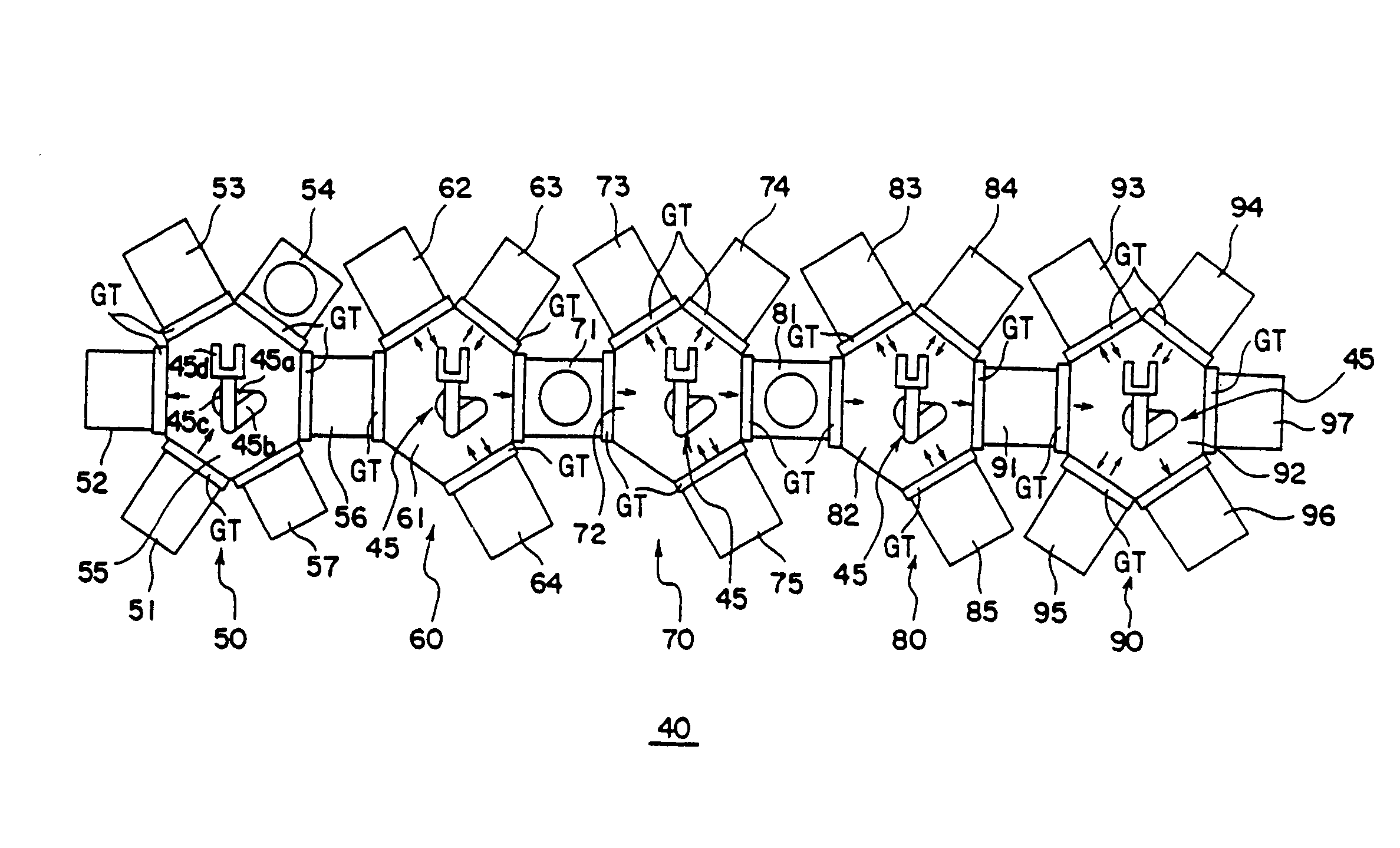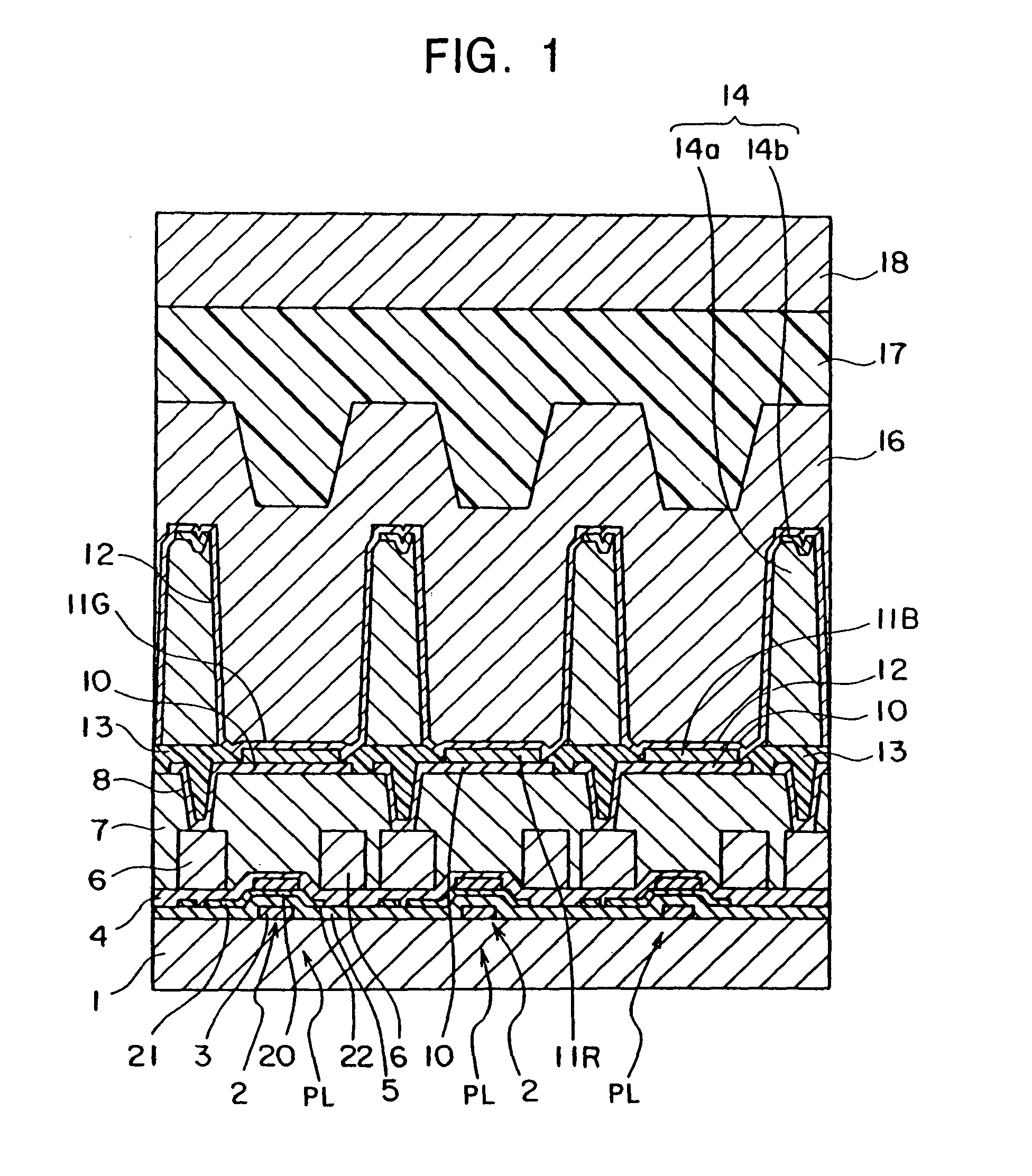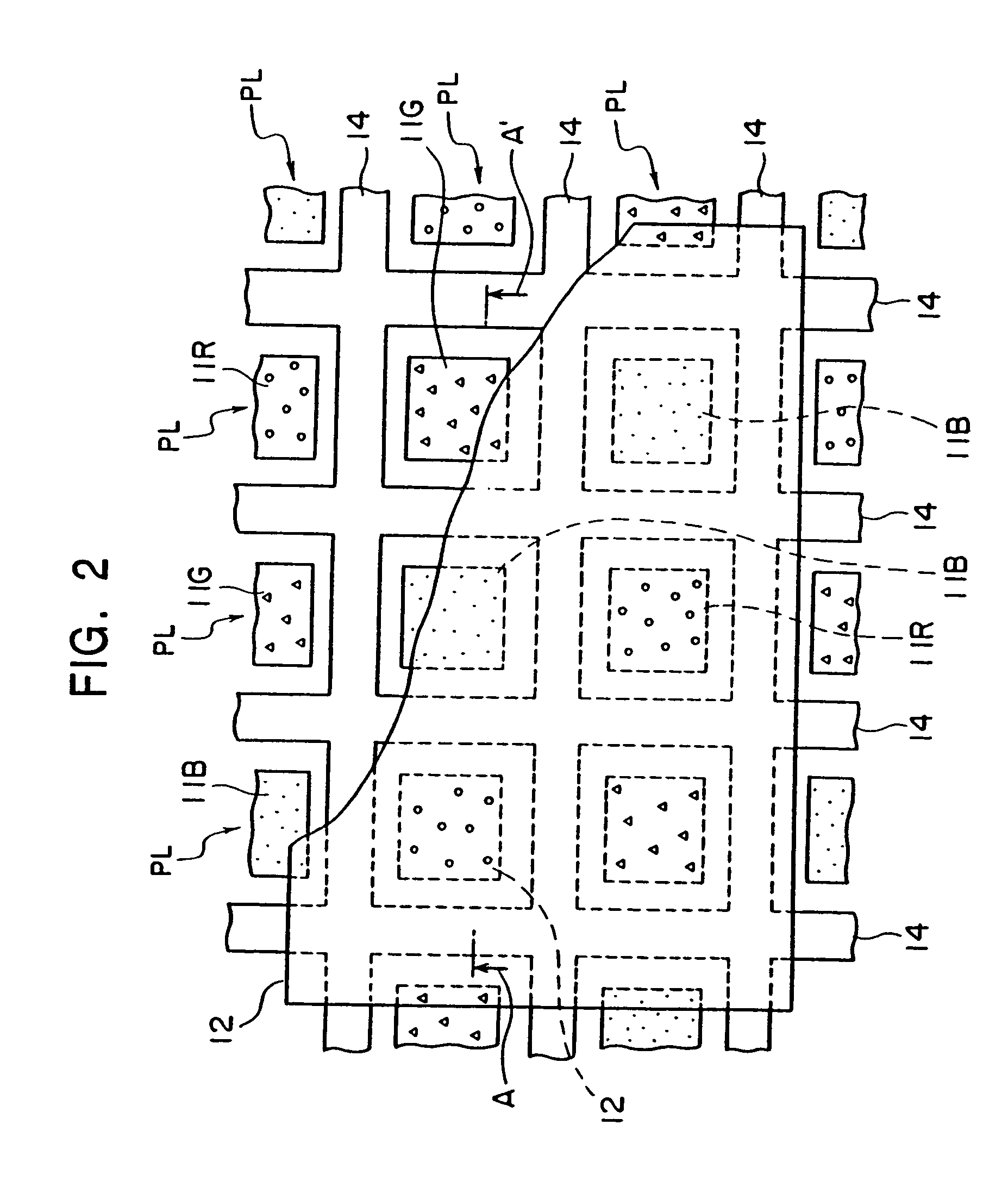Apparatus and method for manufacturing an organic electroluminescence display
a manufacturing apparatus and electroluminescence display technology, applied in the field of manufacturing apparatus for organic electroluminescence display and organic electroluminescence display, can solve the problems of large-scale production of such a display using organic electroluminescence elements, difficult mass production, and inability to meet the requirements of organic electroluminescence elements, etc., to shorten the cycle time of the process, and suppress the consumption of organic materials.
- Summary
- Abstract
- Description
- Claims
- Application Information
AI Technical Summary
Benefits of technology
Problems solved by technology
Method used
Image
Examples
Embodiment Construction
[0043]FIG. 1 and FIG. 2 are views of an example of the organic electroluminescence display to which the present invention is applied. Specifically, FIG. 1 is a cross-sectional view of a portion of the general configuration of the display area of the organic electroluminescence display, while FIG. 2 is a plan view of a portion of the general configuration of the display area of the organic electroluminescence display. Note that FIG. 1 is a cross-sectional view along the direction of the line A-A′ in FIG. 2. Further, the organic electroluminescence display shown in FIG. 1 and FIG. 2 is an active matrix type of color display.
[0044]The display in FIG. 1 has a substrate 1, a number of thin film transistors 2, anode electrodes 10 formed on the transistors 2 via an interlayer insulating layer 7, and organic layers 11G, 11R, and 11B which are formed on the anode electrodes 10 and emit colors of green (G), red (R), and blue (B) respectively. The display also has a cathode electrode 12 formed...
PUM
| Property | Measurement | Unit |
|---|---|---|
| thickness | aaaaa | aaaaa |
| thickness | aaaaa | aaaaa |
| thickness | aaaaa | aaaaa |
Abstract
Description
Claims
Application Information
 Login to View More
Login to View More - R&D
- Intellectual Property
- Life Sciences
- Materials
- Tech Scout
- Unparalleled Data Quality
- Higher Quality Content
- 60% Fewer Hallucinations
Browse by: Latest US Patents, China's latest patents, Technical Efficacy Thesaurus, Application Domain, Technology Topic, Popular Technical Reports.
© 2025 PatSnap. All rights reserved.Legal|Privacy policy|Modern Slavery Act Transparency Statement|Sitemap|About US| Contact US: help@patsnap.com



